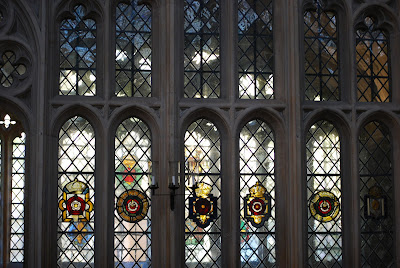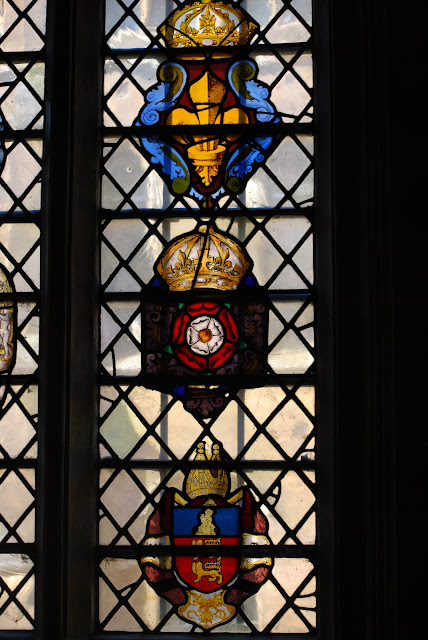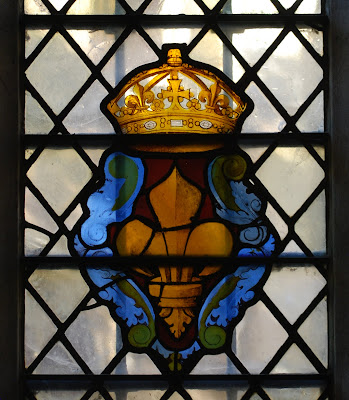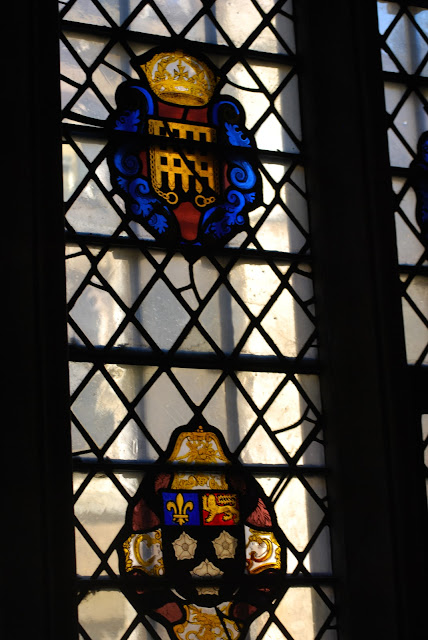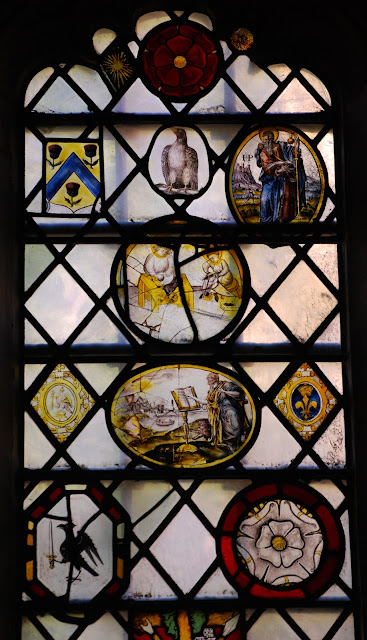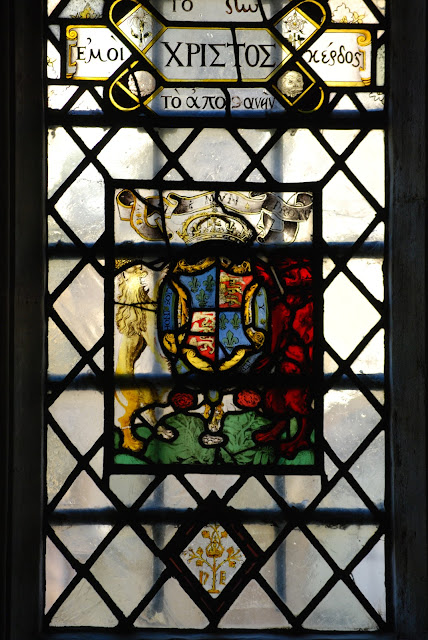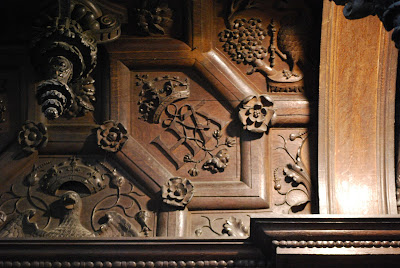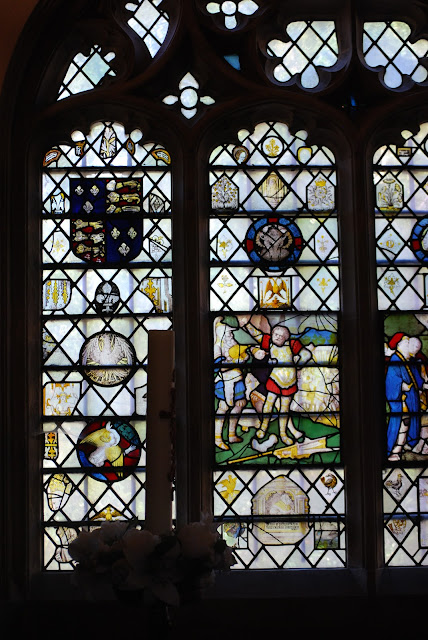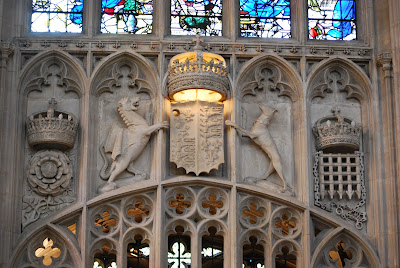There is the tomb of a young man in King's College Chapel, Cambridge, decorated with a very well-known coat of arms.
The arms, of course, are those of Churchill (Sable a lion rampant argent on a canton argent a cross gules, surmounted by the coronet of a marquess), and the tomb is that of 17-year-old John Churchill, the Marquess of Blandford, the only surviving son of John and Sarah (Jennings) Churchill, the first Duke and Duchess of Marlborough. His parents are named on the inscription on the side of his tomb.
Young John Churchill was born in 1686. His only brother, born in 1690, died at the age of two. In 1696, 10-year-old Churchill was sent to Eton College, where he remained and studied until 1700, his fourteenth year. He to follow a military career as his father did, and join the latter's regiment, but his mother was concerned at the risks and wanted to ensure the dukedom could be passed through the male line. He was sent to King's College, Cambridge in 1700.
In early 1703, seventeen-year-old Blandford contracted smallpox, a deadly disease. His mother, the Duchess, rushed to her son's bedside, while Queen Anne, a close friend of Sarah Churchill, dispatched her own personal doctors to attend him. By 19 February, however, word reached London that his condition was hopeless and the queen, who had lost seventeen children herself, wrote a heartfelt letter to Sarah in which she she prayed that "Jesus Christ comfort and support you under this terrible affliction, and it is mercy alone that can do it." On Saturday morning, February 20, 1703 the Marquess died at King's College, plunging his father into "the greatest sorrow in the world."
He was (obviously, since we are looking at his tomb here) buried in King's College Chapel.
In early 1703, seventeen-year-old Blandford contracted smallpox, a deadly disease. His mother, the Duchess, rushed to her son's bedside, while Queen Anne, a close friend of Sarah Churchill, dispatched her own personal doctors to attend him. By 19 February, however, word reached London that his condition was hopeless and the queen, who had lost seventeen children herself, wrote a heartfelt letter to Sarah in which she she prayed that "Jesus Christ comfort and support you under this terrible affliction, and it is mercy alone that can do it." On Saturday morning, February 20, 1703 the Marquess died at King's College, plunging his father into "the greatest sorrow in the world."
He was (obviously, since we are looking at his tomb here) buried in King's College Chapel.
The dukedom of Marlborough passed first to young John's eldest sister, Henrietta Churchill, but her son predeceased her, age 31. The dukedom then passed though the second sister, Anne Churchill, to her son Charles Spencer as the third Duke, and that line continues down to today in the person of Charles James Spencer-Churchill, the 12th Duke.
Winston Churchill, the wartime Prime Minister of Great Britain, was the grandson of John Winston Spencer-Churchill, the 7th Duke of Marlborough.
And from the younger brother of the 3rd Duke, John Spencer, sprang the Earls of Spencer, beginning with John's son John, the 1st Earl. Diana Spencer, Princess of Wales, was the daughter of Edward John Spencer, the 8th Earl, and the sister of Charles Edward Maurice Spencer, the current (9th) Earl.
So young John Churchill was born into what has become quite a family. His death at such a young age is truly a tragedy.
























